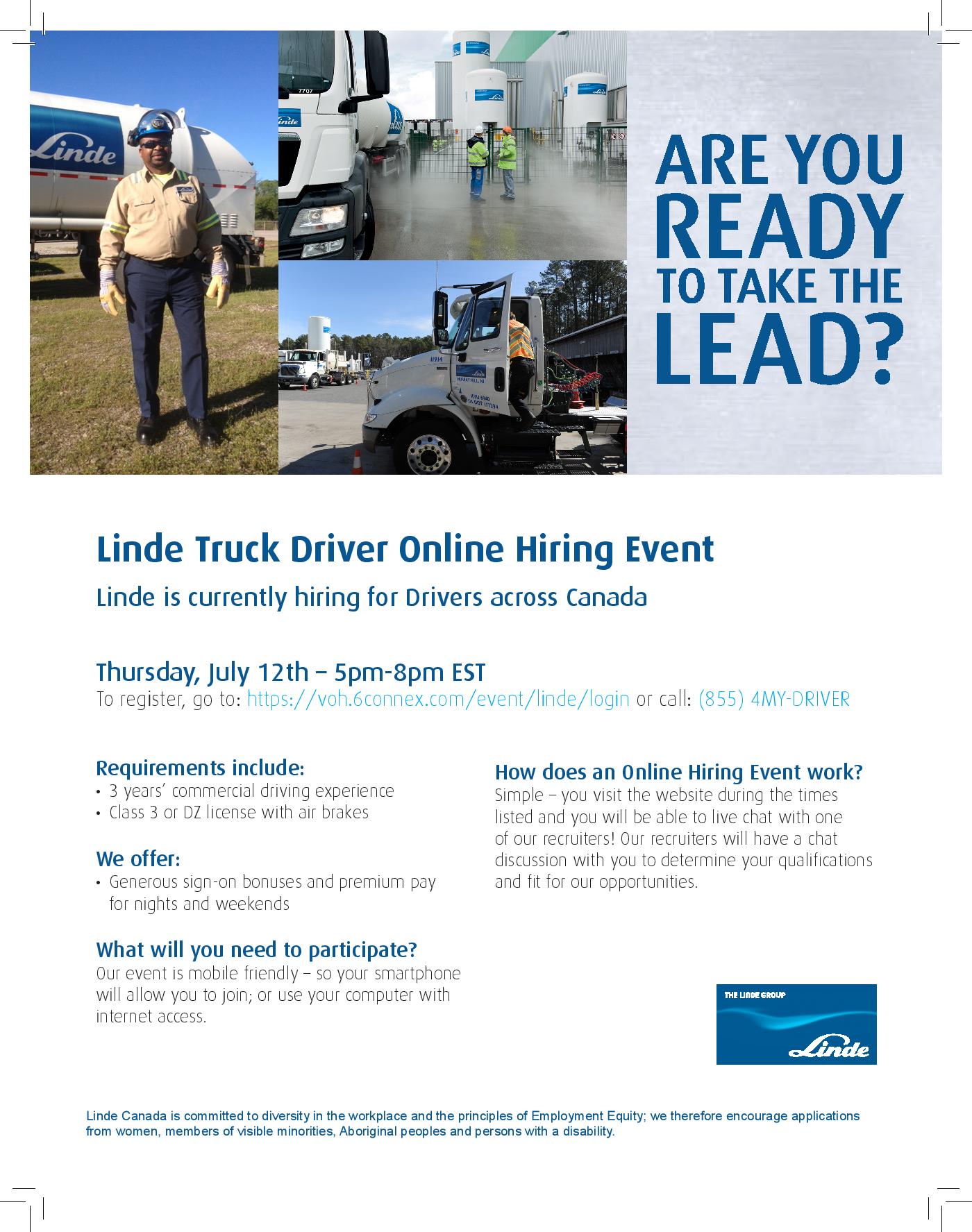
Sharp Transportation Systems Inc. Is hiring




My name is Jordan, and I am a professional driver. I want to learn to drive truck. Currently, I drive school bus. I have maintained my B now for two years and love what I do. The precision movements, the attention to detail, the constant testing of my spacial awareness, and circle checks, please! To some this all sounds like a burden, but to me it is both gratifying and fulfilling. I take great pride in what I do and I believe that shows in my work.
Like most, I obtained my G1 as soon as I was able. That night, my mother took me out for my first “lesson”. I had of course, like any other delinquent teen, driven many times prior. Little laps around the block when I was just supposed to be switching the cars in the lane way, (sometimes a little further). But nothing like what I experienced that night. A couple of wrong turns left us on a road that emptied onto the 401. We should have stopped and switched, but under my mothers direction, I merged onto the highway. There were three of us in the car, a 1992 forest green Dodge Shadow. I remember the sound of the horn as a truck came up behind us and my Dad in the back seat shouting “Punch it! Punch it!” as he maintained a death grip on my head rest. I looked in the mirror and read ‘MACK’ spelled backwards and kept the pedal on the floor. I laughed as the adrenaline pumped through my body. I knew we were fine, I knew even then that I had full control over the vehicle and that I may have upset the driver with our poor choice, but we were safe. And I was hooked. I drove everywhere from then on. I was good. I am good. I wish that I had been exposed to racing at that time in my life. It is my dream to race. Although the two jobs are very different, they both require a immense amount of skill and a formidable grasp on the movements of the vehicle. That is why I want to drive truck.
I am a professional driver. I started my career as a driver about 5 years ago, a little later in life than most. So far my age has not stood in my way of being awesome and learning new things. My life had just changed rather unexpectedly and I found myself a job working as a car jockey at a local car and truck rental company. I did detailing, customer shuttles, shuttling rentals from city to city as well as small maintenance. What I learned from the experience was that driving the bigger vehicles was the highlight of each day. From there I moved from position to position getting the experience I needed to achieve the credentials I wanted. My goal is to climb my way through opportunities until I achieve my AZ License and am teaching driving to others.
Written and submitted by: Jordan Janse-French
Jordan asked us to share her story in hope of inspiring others to explore the trucking industry.



As a child, on those numerous occasions when I thought that a task was too large or too complex for me, my father had one response that he used without fail, always phrased in the form of a question: How do you eat an elephant- answer: one bite at a time.
Much has been published in the last seven months in both industry publications and mainstream media outlets about the ongoing capacity shortage an elephant sized issue if there ever was one- particularly as it relates to the limited supply of trucks. In many ways, the solution to this industry challenge is no different than that of perceived challenges of my childhood. We need to simply start to fix the parts of the supply chain that we have allowed to break – one bite at a time.
I was thinking of this universal truth in light of an experience I have repeatedly experienced over my two decades in this industry- yet another typical example of the myriad ways that this industry attempts to diminish the value of drivers limited on duty hours.
We had a driver scheduled to load for a 3PL this morning- 6 am Pickup appointment with strict instructions for the driver to be on time. As often happens, the driver arrived at 6 am only to find out that the brokerage dispatcher on the order had neglected to provide us with the correct pickup number and trip number needed for loading, even though they were in her custody. After 90 minutes, the confusion was finally clarified at the cost of 90 minutes of the drivers on duty time.
Assuming that we have this issue happen once per day with half of our trucks, for a duration of 30 minutes per event – it means that in a small fleet like ours- 12.5 hours per day are being wasted with delays that are entirely avoidable. Most of us are aware that preventable delays are one of the main sources of driver frustration and exodus.
However, the other thing I would like us to think about is this when we think about our elephant eating challenge: that’s more than one 11 hour driving shift- so by extension for every day of operation, we have one truck running free of charge because simple things like pickup numbers are not provided – simply because people do not care enough to think about the downstream effects of their inaction.
In essence, this means that we have one truck that could be moving freight but is not- taking one trucks capacity completely out of the market, even though all of its associated expenses are there. If that’s true for a small 50 truck fleet like ours- imagine the number of trucks wasted if that math holds true industry wide?
Perhaps, instead of complaining about shortage of capacity and rising rates, forward thinking shippers and receivers can look internally at simple cost and efficiency improvements. I hope to explore a number of these themes over my next few posts.
However, with this challenge – there is also a call to action for those people responsible for operational decisions at asset based carriers. As an industry we need to stop saying “this is part of Transportation”- there’s no need for inefficiencies like this- and no need for the same folks who cause the inefficiencies to be complaining about rising costs. It takes true collaboration and partnership to drive inefficiencies out of a supply chain- the picture is much bigger than pure Transportation cost. It takes everyone’s proactivity and effort to improve conditions for everyone.
How do you eat an elephant: To solve our capacity crisis, we all need to be serious about one bite at a time!
Bio: Tony Gerber has been one of the Managing Directors at Flash Freight Systems of Guelph, ON since 2004 – an asset based provider of crossborder and domestic transportation and warehousing solutions. He’s passionate about operational excellence, the application of the lost art of common sense, coffee, and reimagining the status quo in the supply chain to improve everyone’s quality of life and service levels.

Virtual Hiring Event for Truck Drivers on Thursday, July 12th, 5:00pm – 8:00pm EST.
Drivers should have their Class 3 or DZ license. Linde offers lucrative pay, generous sign-on-bonuses, and premium pay for nights and weekends.
The event will allow interested parties to use their mobile device or computer to live chat with Linde recruiters to determine their qualifications and fit for job opportunities. We have dozens of positions across Canada, so please share this information widely.
To register for the event, interested candidates can go here:
https://voh.6connex.com/event/linde/login or call (855) 4MY-Driver with any questions.
